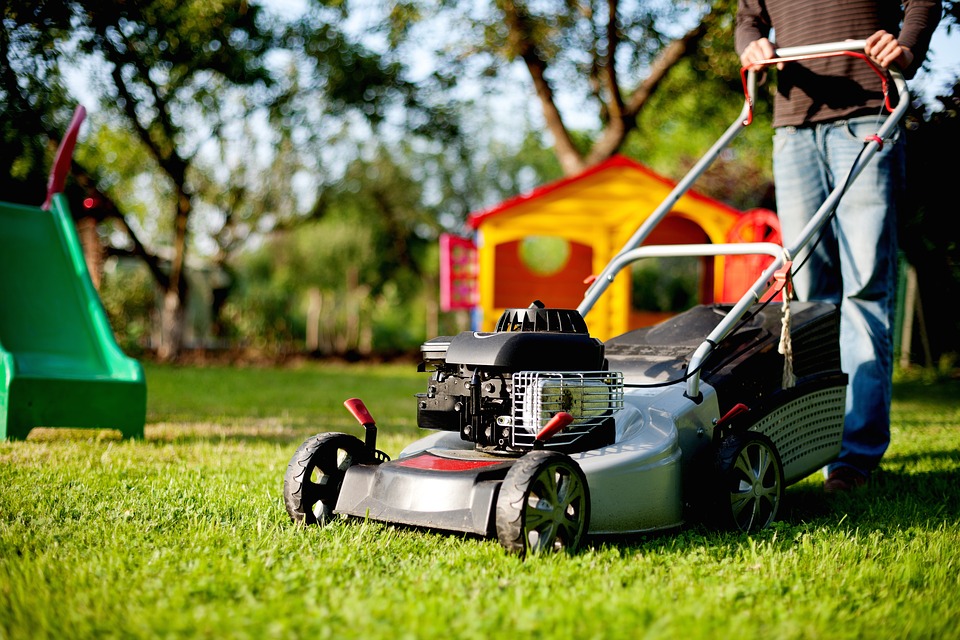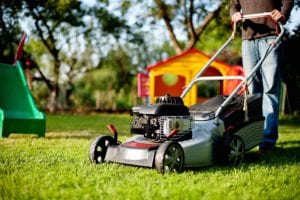
 How much time do you spend maintaining your landscape? According to a survey cited by the Chicago Tribute, the average American homeowner spends a staggering 70 hours on his or her landscape each year. Of course, that’s nearly the equivalent of two full workweeks. The good news is that there are ways to design a low-maintenance landscape
How much time do you spend maintaining your landscape? According to a survey cited by the Chicago Tribute, the average American homeowner spends a staggering 70 hours on his or her landscape each year. Of course, that’s nearly the equivalent of two full workweeks. The good news is that there are ways to design a low-maintenance landscape
Plant Slow-Growing Grass
Consider planting a slow-growing variety or grass in your landscape. The most time-consuming task of maintaining a landscape is mowing the grass. During the spring and summer, you can expect to mow your lawn about once a week — sometimes even more frequently — with most common varieties of residential grass. But some varieties grow slower than others, and planting one of these varieties will ease the burden of mowing your lawn. Zoysia grass, for example, typically requires mowing just once every two or three weeks, making it an excellent choice for a low-maintenance landscape.
Cut Down Unwanted Trees
The number of trees your landscape has will affect the amount of work it requires to maintain. From tree limbs, pine straw, leaves, acorns and other debris, trees can create a quite mess. Therefore, you should cut down and remove any unwanted trees in your landscape. If a tree offers shade or aesthetics, keep it. Otherwise, hire a tree removal company to cut it down. Not only will this create a cleaner landscape, but it may provide you with a plentiful stack of firewood to use in your fire pit.
Install an Automated Irrigation System
 You can’t always rely on Mother Nature to keep your grass hydrated. While manually watering your lawn is always an option, an easier solution is to install an automated irrigation system. There are different types of automated irrigation systems, but they are all designed to automate the process of watering grass. Once installed, you can control when the sprinklers are activated and for how long they stay active. It’s an easy, hands-free way to ensure that your grass receives adequate water, even when you’re away from your home.
You can’t always rely on Mother Nature to keep your grass hydrated. While manually watering your lawn is always an option, an easier solution is to install an automated irrigation system. There are different types of automated irrigation systems, but they are all designed to automate the process of watering grass. Once installed, you can control when the sprinklers are activated and for how long they stay active. It’s an easy, hands-free way to ensure that your grass receives adequate water, even when you’re away from your home.
Use Perennial Plants in Flowerbeds
Avoid using annual plants in your flowerbeds and instead use perennial plants. Perennial plants are defined as plants that last for at least two years. In comparison, annual plants only last for a year, so you can expect to replant them every year.
Here are a few low-maintenance perennial plants that work well in the Southeast:
- Daylily
- Latana
- Rudbeckia Fulgida
- Peruvian lily
- Heuchera
- Yarrow
Spot Treat Weeds
The secret to maintaining a weed-free landscape is to eliminate them as soon as they emerge through the soil. When you spot a new weed growing in your landscape, either pull it out using a handheld weed extractor or treat it with an herbicide. The former requires more work, but the latter is more effective at killing weeds. There are dozens of herbicides available that will quickly kill weeds without harming your grass. Alternatively, you can make your own weed-killing herbicide using a solution of vinegar, salt and liquid dish soap. The vinegar and salt is what kills weeds, but the soap creates a sticky texture that clings to weeds. Just combine the three ingredients in a spray bottle, at which point you can spray it over any weeds growing in your landscape.
Create a French Drain Around Waterlogged Areas
If you discover an area of your landscape where rainwater collects and “pools up” rather than drains away, construct a French drain to prevent it from becoming waterlogged. Also known as a trench drain or rock drain, a French drain consists of a downward-sloping tunnel that’s filled with gravel or small rocks. When it rains, water will seep past the gravel or rocks and into the tunnel, at which point it will drain away from your landscape.
Use Mulch Around Trees and Plants
Adding mulch around trees and plants offers two main benefits, one of which is fewer weeds. It covers the soil so that newly sprouted weeds are unable to receive sunlight, thereby preventing them from growing. Additionally, mulch reduces the watering requirements of your trees and plants. Mulch absorbs and holds moisture, gradually releasing this moisture back into the soil where it’s then absorbed by the adjacent trees and plants.
Create a Dedicated Outdoor Living Space
Finally, consider creating a dedicated outdoor living space in your landscape. You can clear out a section of your landscape, for example, to lay gravel, brick pavers or even cement. When finished, you can use set up a fire pit, chairs and other accessories to complete your new outdoor living space. Even if it’s only 10 by 10 feet, that’s still 100 square feet of landscape space that you won’t have to worry about maintaining.
Low-maintenance landscapes are gaining popularity among homeowners in the United States. According to a survey conducted by the American Society of Landscape Architects (ASLA), they are the third-most popular landscape project, surpassed only by “native plants” and “drought-tolerant plants.” And now you join the crowd by creating a low-maintenance landscape using these tips.
If you have any questions regarding how an S&S Fire Pit can enhance your outdoor living space; We can help. https://ssfirepits.com/contact/


